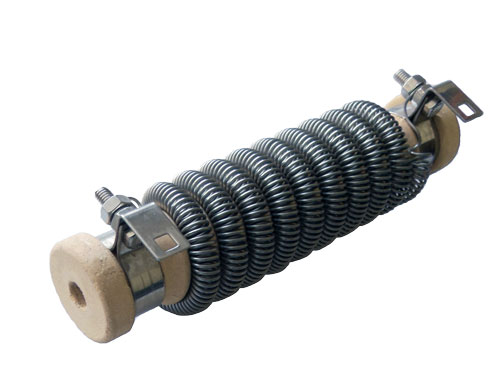All I know is that the transformer serves as a great table for when I have to survey the building ;DHow come regular transformers have a different construction? Such as these that we're all familiar with. Yes there's ventilation, but not like a rectifier with the metallic grated top. Is it because a rectifier generates more heat?
View attachment 2577969
So that's the reason for the pitched triangular roof?
You are using an out of date browser. It may not display this or other websites correctly.
You should upgrade or use an alternative browser.
You should upgrade or use an alternative browser.
Rectifier Questions
- Thread starter Grouch
- Start date
- Location
- Wisconsin
- Occupation
- PE (Retired) - Power Systems
And i always thought they were to keep coffee cups/pots warmAll I know is that the transformer serves as a great table for when I have to survey the building ;D
zbang
Senior Member
- Location
- Roughly 5346 miles from Earls Court
...which you would need when the elevator isn't connected to a large bus with lots of other loads to absorb the energy, like the ConEd DC gridTo absorb the energy produced by the lowering load of the elevator, similar to what happens with a crane.
Grouch
Senior Member
- Location
- New York, NY
is this what's going on with the DC elevators? This is from www.megaresistors.comTo absorb the energy produced by the lowering load of the elevator, similar to what happens with a crane.
"When removed from a power supply, most DC motors will act as electrical generators due to their permanent magnets. If a resistor is then connected as a load, the energy produced by the rotational inertia of the DC motor will be dissipated by the resistor slowing down the motor. While AC motors do not have permanent magnets in their rotors, they do have an induced magnetic field created by the rotating magnetic field in the stator. The energy lost in the stator will backfeed into the variable frequency drive (VFD), which will rise the voltage on the DC bus in the VFD."
And this looks exactly what's on top of the rectifiers... you can see the illustrations. Sans the pitched top:

Braking Resistor - MegaResistors
Braking resistors handle regenerated power from motor braking and overhauling applications. Size your resistor, browse our cross-references, and get the perfect resistor for your application.
- Location
- Wisconsin
- Occupation
- PE (Retired) - Power Systems
Does ConEd distribute DC power? The OP looks like a stand alone rectifier with a breaking resistor....which you would need when the elevator isn't connected to a large bus with lots of other loads to absorb the energy, like the ConEd DC grid.
zbang
Senior Member
- Location
- Roughly 5346 miles from Earls Court
They had a massive DC system in Manhattan, it was completely off only in 2007-

Fun Fact- A Chorus Line was the first Broadway show to use a computer-operated lighting system. This required the Shubert Theater to install enough AC power for the lights; to that point pretty much all Broadway lighting was DC with resistance dimmers (occasionally in the alley or building next door).
Off Goes the Power Current Started by Thomas Edison
Con Edison ends 125 years of an electricity service that began when the Pearl Street power plant opened in 1882 and lighted Lower Manhattan. Finally, Nikola Tesla and George Westinghouse win.
archive.nytimes.com
Fun Fact- A Chorus Line was the first Broadway show to use a computer-operated lighting system. This required the Shubert Theater to install enough AC power for the lights; to that point pretty much all Broadway lighting was DC with resistance dimmers (occasionally in the alley or building next door).
Grouch
Senior Member
- Location
- New York, NY
I understand that the resistors absorb the energy thrown back onto the feeder by the DC motor. The literature says the resistors help slow down the motor. I don't see how it helps slow down the motor though. I can see the resistors acting as a sink to absorb the back-EMF from the motor; the motor eventually comes to a stop anyway.
- Location
- Wisconsin
- Occupation
- PE (Retired) - Power Systems
The motor acts like a generator, the resistor acts as a load. If you put too much load on a generator doesnt it eventuality slow down an stop?I understand that the resistors absorb the energy thrown back onto the feeder by the DC motor. The literature says the resistors help slow down the motor. I don't see how it helps slow down the motor though. I can see the resistors acting as a sink to absorb the back-EMF from the motor; the motor eventually comes to a stop anyway.
Grouch
Senior Member
- Location
- New York, NY
Ok, that is true.The motor acts like a generator, the resistor acts as a load. If you put too much load on a generator doesnt it eventuality slow down an stop?
Say the resistors weren't there. I'm assuming the motor would keep spinning until there's no more inertia that keeps it spinning? In other words, the resistors just make the motor stop faster?
Take a small DC motor and spin the shaft. It turns freely. Now short the terminals together and try spinning it again.I understand that the resistors absorb the energy thrown back onto the feeder by the DC motor. The literature says the resistors help slow down the motor. I don't see how it helps slow down the motor though. I can see the resistors acting as a sink to absorb the back-EMF from the motor; the motor eventually comes to a stop anyway.
- Location
- Wisconsin
- Occupation
- PE (Retired) - Power Systems
Yes.Say the resistors weren't there. I'm assuming the motor would keep spinning until there's no more inertia that keeps it spinning? In other words, the resistors just make the motor stop faster?
Grouch
Senior Member
- Location
- New York, NY
Great! Thanks everyone for the help and feedback.
LarryFine
Master Electrician Electric Contractor Richmond VA
- Location
- Henrico County, VA
- Occupation
- Electrical Contractor

Dynamic braking - Wikipedia
- Location
- San Francisco Bay Area, CA, USA
- Occupation
- Electrical Engineer
In a descending elevator, “no more inertia” means the elevator has stopped, either because the emergency brakes deployed, or everything is in a twisted pile of metal at the bottom of the shaft. Neither outcome is ideal…Ok, that is true.
Say the resistors weren't there. I'm assuming the motor would keep spinning until there's no more inertia that keeps it spinning?
winnie
Senior Member
- Location
- Springfield, MA, USA
- Occupation
- Electric motor research
Ok, that is true.
Say the resistors weren't there. I'm assuming the motor would keep spinning until there's no more inertia that keeps it spinning? In other words, the resistors just make the motor stop faster?
As already noted, the best way to have a motor _control_ an overhauling load is to get the motor to act as a generator, producing torque in the opposite direction of rotation. If this happens you need to do something with the generated electricity, and that means some sort of load (or battery to store the energy, or a line regenerative unit to feed the energy back to the power grid...).
If the resistors weren't there, and you didn't have some other way to get rid of the generated electricity, then you would have to do something else to get the motor to produce torque in the opposite direction of rotation.
I am not sure if the term applies to _DC_ motors, but one technique is called 'plugging', where you actively drive the motor in the reverse direction of rotation. This will act to slow the motor down and not act as a generator. But it has one huge downside: all of the energy that would otherwise be 'regenerated' and dissipated in the resistors, plus any losses from producing the reverse torque will be dissipated as heat in the motor. This will overheat the motor very quickly unless the motor is vastly oversized for the load, in which case: resistors are cheaper than motors.
-Jonathan
LarryFine
Master Electrician Electric Contractor Richmond VA
- Location
- Henrico County, VA
- Occupation
- Electrical Contractor


